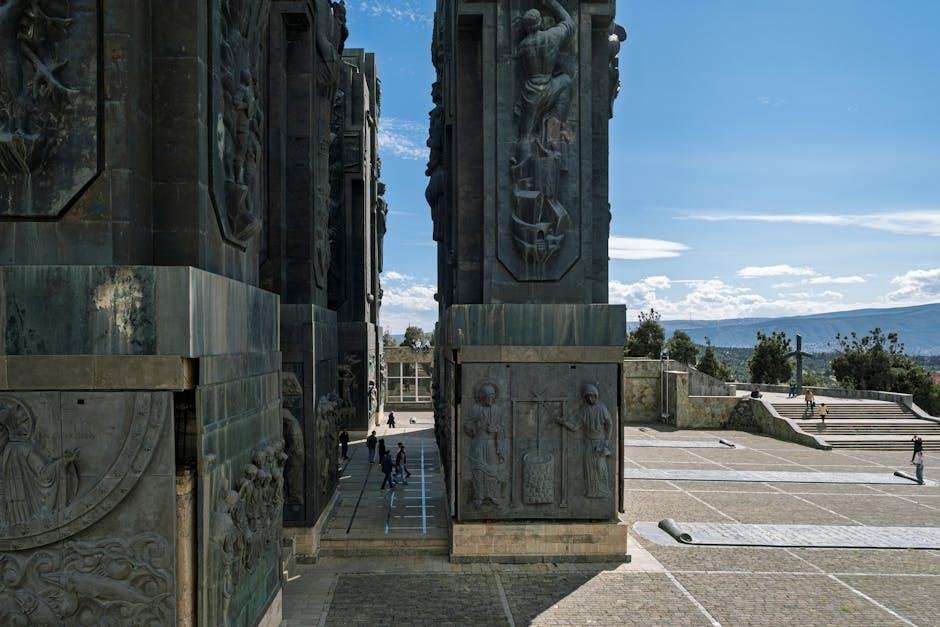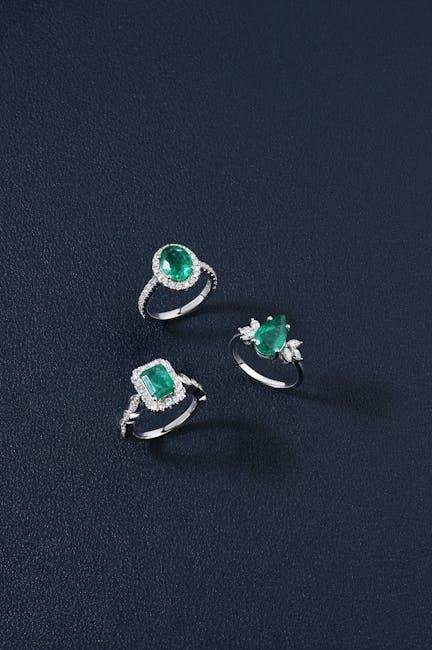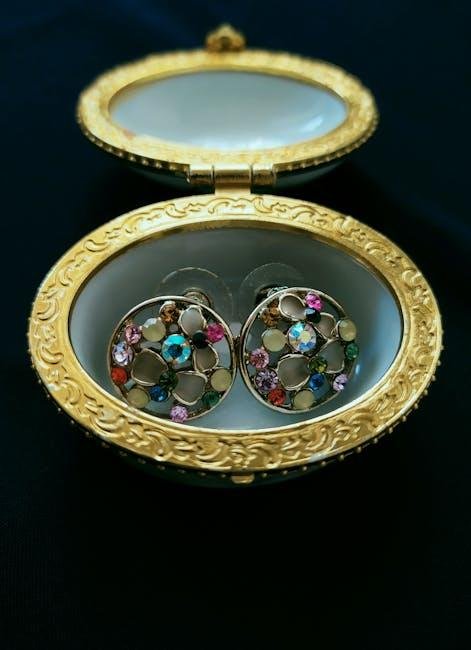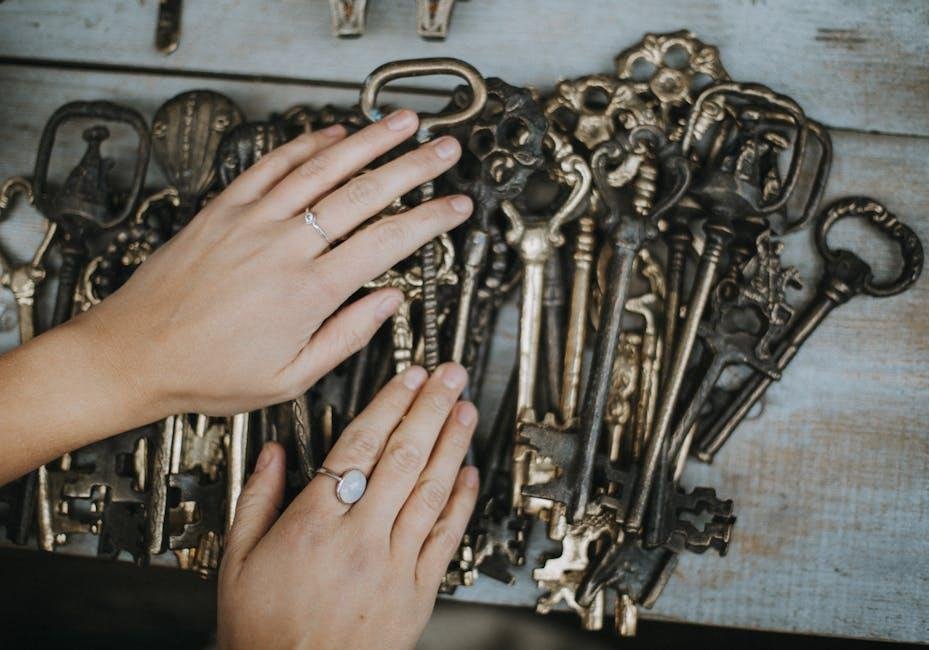In a world where sentimentality frequently enough intertwines with artistry, rings stand out as powerful symbols of personal expression adn history. Whether a delicate vintage band passed down through generations or a bold modern statement piece, the allure of rings extends beyond their mere aesthetic appeal. But what transforms a simple circle of metal and stone into a sought-after collectible? This article delves into the intricate tapestry of factors that contribute to a ring’s desirability, examining elements such as craftsmanship, historical importance, rarity, and the emotional connections forged by their wearers. Join us as we explore the captivating journey of what makes a ring truly collectible, revealing the stories hidden within each unique piece.
The Allure of Historical Significance in Ring Collecting
The charm of collecting rings often transcends mere aesthetics; it intertwines with the rich tapestry of history that many pieces carry. Each ring can be a silent witness to significant events, representing personal stories or cultural milestones. This unique blend of artistry and narrative creates an emotional connection that resonates with collectors, making historical pieces not just items of adornment but cherished artifacts. Collectors often seek rings that are not only gorgeous but also encapsulate a moment in time, allowing them to connect with the past in a deeply personal way.
Factors contributing to historical significance in ring collecting frequently enough include:
- Provenance: The documented history of ownership adds immense value, with rings once owned by notable historical figures considered especially desirable.
- Cultural Heritage: Rings that reflect the traditions and craftsmanship of specific cultures appeal to collectors interested in preserving and sharing those stories.
- design Evolution: Rings that showcase design changes over different historical periods can illustrate the evolution of jewelry-making techniques and societal trends.
| Ring Type | Historical Significance |
|---|---|
| Royal Signet Rings | Symbols of authority and power, often linked to monarchy. |
| Victorian Mourning Rings | Commemorated loved ones, reflecting societal mourning customs. |
| Engagement Rings | Represent significant milestones,reflecting societal shifts in courtship. |

Exploring Gemstone Quality and Rarity in Collectible Rings
When delving into the world of collectible rings, the quality and rarity of gemstones often play a pivotal role in determining a piece’s allure and value. Collectors are notably drawn to gemstones that exhibit uniqueness, clarity, and vivid color, as thes characteristics significantly enhance a stone’s desirability. The origin of the gemstone can also influence its appeal; for example, stones from renowned sources like Myanmar or Colombia are often perceived as more valuable due to their legacy of craftsmanship and quality. Furthermore, the cut and setting of the gemstone can elevate the ring’s overall aesthetic, making it not just a piece of jewelry, but a coveted collectible in its own right.
The continuation of this exploration leads us to consider the rarity quotient. Certain gemstones,such as alexandrite,paraiba tourmaline,and imperial topaz,are seldom found in nature and thus command higher prices among collectors. Collectors often refer to a gemstone’s scarcity, the quality of the cut, and the history of previous ownership as fundamental aspects that add to a ring’s collectible charm. here’s a brief overview of some considerations that impact gemstone rarity:
| Gemstone | Rarity Factor |
|---|---|
| Alexandrite | Unique color-changing properties |
| Paraiba Tourmaline | vivid neon colors, limited sources |
| Imperial Topaz | Rich coloration, scarce availability |

Understanding Design Elements and Craftsmanship in Fine Jewelry
In the world of fine jewelry, the allure of a ring often lies within its design elements and the skillful craftsmanship that brings it to life. The intricate details, such as filigree, engraving, and gemstone settings, play a pivotal role in defining a ring’s uniqueness. Collectors are drawn to pieces that showcase masterful techniques, which often reflect the era or style they represent. As an example, a Victorian ring may feature ornate designs, while a modern piece might emphasize minimalism. Understanding how these elements combine allows collectors to appreciate the true essence of the jewelry.
moreover, the quality of the materials employed can greatly influence a ring’s collectibility. Gemstones, whether they are diamonds, sapphires, or less-conventional options like opal or moissanite, should be assessed for their clarity, cut, and color. Additionally, the type of metal—be it platinum, gold, or silver—also contributes to the overall value and desirability of the ring.To illustrate the importance of materials and craftsmanship, consider the following table:
| Material | Characteristics | Collectibility |
|---|---|---|
| Platinum | Durable, hypoallergenic, and rare | high |
| Gold | Classic, available in various colors (yellow, white, rose) | Moderate to High |
| Silver | Affordable, tarnishes easily | Moderate |

Navigating Market Trends: The Future Value of Collectible Rings
The allure of collectible rings lies in their unique intersection of artistry and investment potential. As trends evolve, collectors are increasingly drawn to rings that tell a story—pieces that possess historical significance, unique craftsmanship, or rare gemstones.The rarity of an item greatly influences its value, making limited editions or discontinued styles highly sought after. Additionally, the condition, including any wear or restorations, plays a critical role in determining how much collectors are willing to pay for these exquisite items.
Future market trends suggest that certain styles are poised to rise in value as preferences shift.As a notable example, vintage rings, especially those from iconic periods such as Art Deco or Victorian eras, are becoming more popular among younger generations. Attributes contributing to their desirability include:
- Age and Historical Significance: Rings that have a rich history behind them often attract serious collectors.
- Material Composition: The use of rare metals,gemstones,and unique settings can enhance value.
- designer Labels: Rings made by renowned jewelers or designers are typically more collectible.
- cultural Influences: Pieces that reflect cultural trends or movements may also see increased demand.
Future outlook
In concluding our exploration of what makes a ring collectible, it’s clear that the allure of these adornments goes far beyond mere aesthetics. From the intricate craftsmanship and historical significance to the stories they carry and the emotions they evoke, collectible rings serve as a bridge between the past and the present. They are not just items of beauty; they are tokens of memory, culture, and personal connection. As collectors and enthusiasts alike continue to seek out pieces that resonate with their individual journeys, the world of collectible rings remains as vibrant and dynamic as ever. Whether you’re a seasoned collector or just beginning to appreciate the nuances of this fascinating realm,remember that each ring has its own unique tale,waiting to be discovered and cherished. So,as you venture into this captivating world,may you find not just pieces of jewelry,but heirlooms of history and symbols of identity that will inspire generations to come.

